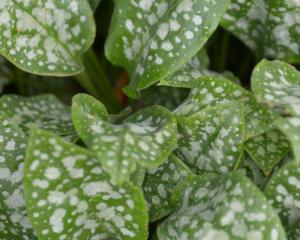
These trees share an unusual feature for flowering plants in having vessel-free wood. Their xylem contain tracheids instead of vessel members to conduct water and nutrients up through the stems. This distinguishing feature has been used as the determining factor to shift Tetracentron sinense, previously the sole living species in the family Tetracentraceae, to be now included in the family Trochodendraceae, along with the genus Trochodendron.
The cartwheel tree, Trochodendron aralioides, is a slow-growing evergreen tree or large shrub. Sometimes starting life as an epiphyte, the leaves of this tree grow in spiral clusters near the branch tips. It is in these leaf whorls that clusters of green flowers develop. The flower stamens spread like spokes of a wheel — hence the common name. They are extremely popular with florists.
The Tetracentron sinense has an attractive form with gracefully arching branches and serrated heart-shaped foliage on red stems. The new foliage opens with a pink/red tinge; as they mature, they become dark green but change to red in the autumn. As an extra bonus, it produces tiny yellow flowers borne in pendulous spikes in summer which the bees like.
There is a fine specimen of Tetracentron sinense in the Clive Lister Garden on the left as you walk from the Winter Garden display houses through the lychgate on the way to the pond.
Both these plants grow well in woodland conditions.
Garden Life is produced by Dunedin Botanic Garden.
For further information contact David Askin.











